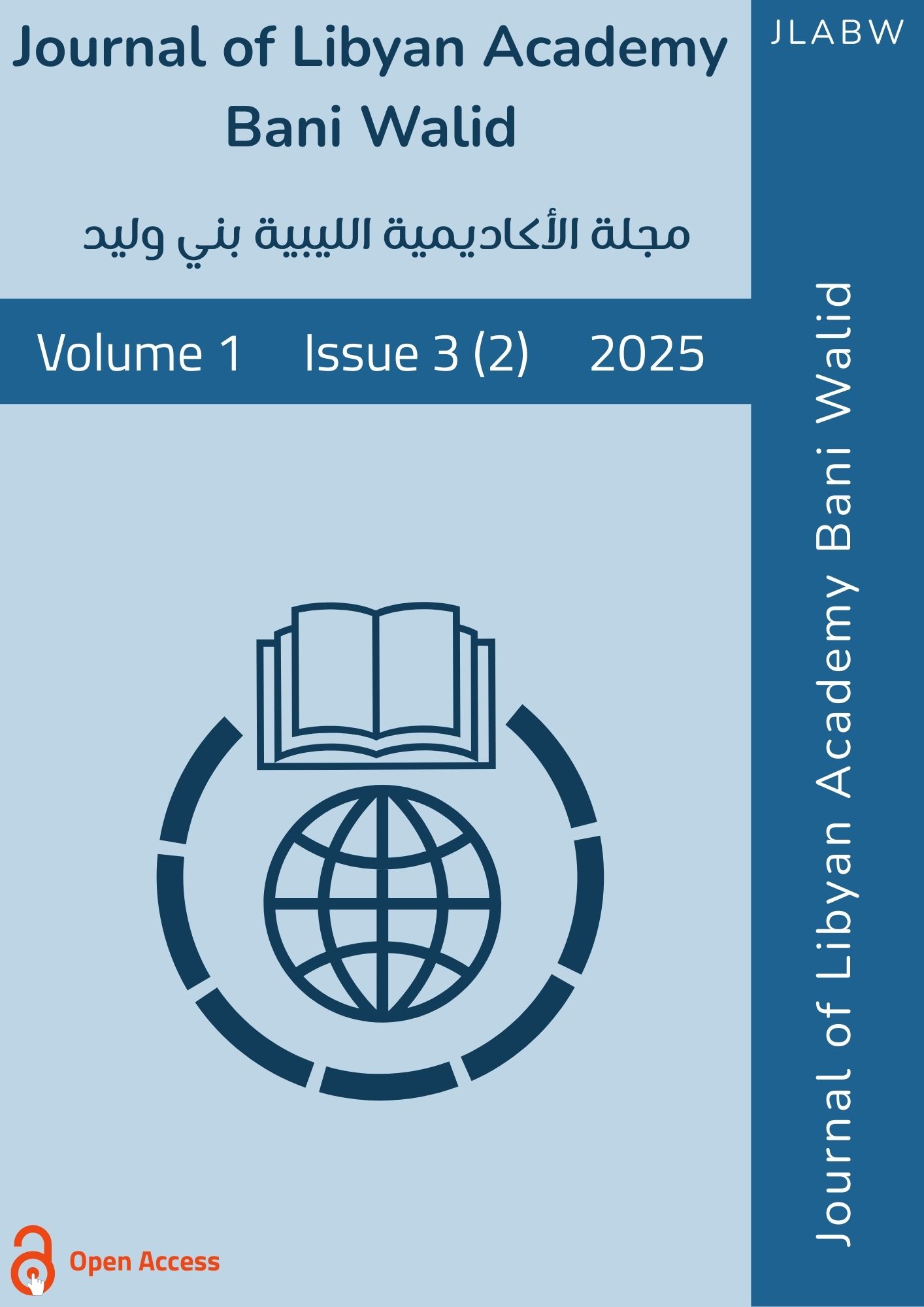Analysis of Hydrographic and Biogeochemical Characteristics in the Southern Mediterranean Using Unsupervised Learning and Their Impact on the Marine Environment
DOI:
https://doi.org/10.61952/jlabw.v1i3.221Keywords:
Unsupervised Learning, Hydrographic Properties, Biogeochemical Characteristics, , Mediterranean SeaAbstract
This research aims to analyze and characterize the hydrographic and biogeochemical properties of the southern Mediterranean Sea to better understand the patterns of vertical stratification and their impact on the marine environment.
Unsupervised learning techniques — specifically the K-Means algorithm and Self-Organizing Maps (SOM) — were applied to analyze multidimensional datasets. This analysis was further supported by advanced statistical tools such as Principal Component Analysis (PCA) and Analysis of Variance (ANOVA) to ensure the reliability of the results.
The analysis successfully identified three major water masses that are vertically distinct (surface, intermediate, and deep layers). PCA results confirmed that vertical stratification — represented by density, temperature, and dissolved oxygen — is the main driver of variability in the region. The findings also revealed statistically significant differences in physical parameters and dissolved oxygen among the identified water masses.
The study demonstrated that integrating machine learning with statistical analysis provides a robust framework for exploring complex patterns in marine systems, thereby supporting environmental management and the conservation of marine resources in the southern Mediterranean.
References
Belgacem, M., Sghaier, Y. R., Zouch, M., & Ayadi, H. (2020). On the peculiar nutrient ratios in the Mediterranean Sea: A basin-wide study. Progress in Oceanography, 188, 102424
Civitarese, G., Fajar, N. M., Fripiat, F., Gerke, L., Gogou, A., Guallart, E. F., ... & Tanhua, T. (2020). Physical and biogeochemical parameters of the Mediterranean Sea during the last few decades. Earth System Science Data, 12(4), 2747–2771. https://doi.org/10.5194/essd-12-2747-2020
Cremonini, R., Cappelletto, A., & Pavanati, M. (2021). K-means clustering for meteo-oceanographic data analysis: A case study. Journal of Marine Science and Engineering, 9(5), 521.
Esri, National Oceanic and Atmospheric Administration (NOAA), & U.S. Geological Survey (USGS). (2017). A Three-Dimensional Mapping of the Ocean Based on Environmental Data. Oceanography, 30(2), 100-109.
Grover, A., Benson, A. R., & Guttag, J. V. (2024). The Promise and Pitfalls of Machine Learning in Ocean Remote Sensing. Oceanography, 37(3). https://tos.org/oceanography/article/the-promise-and-pitfalls-of-machine-learning-in-ocean-remote-sensing
Hassoun, A. E. R., & Mojtahid, M. (2025, September 5). What climate change means for the Mediterranean Sea. Phys.org. Retrieved from https://phys.org/news/2025-09-climate-mediterranean-sea.html
Hassoun, A. E. R., et al. (2025). Climate change risks on key open marine and coastal Mediterranean ecosystems. Scientific Reports, 15, Article 07858. https://www.nature.com/articles/s41598-025-07858-x
Monir, M. U., et al. (2023). Machine learning in marine ecology: an overview of techniques and applications. ICES Journal of Marine Science, 80(7), 1829–1847. https://doi.org/10.1093/icesjms/fsad118
Placenti, F., Schroeder, K., Borghini, M., Cerrati, G., Cuttitta, A., Tancredi, V., ... & Patti, B. (2024). A 12-year-long (2010–2021) hydrological and biogeochemical dataset in the Sicily Channel (Mediterranean Sea). Earth System Science Data, 16(2), 743–757.






